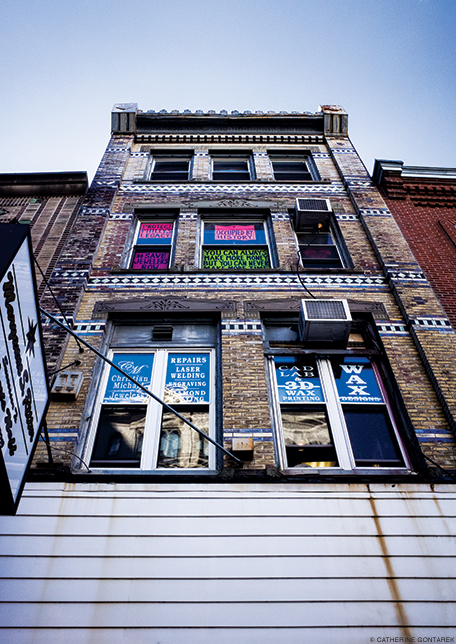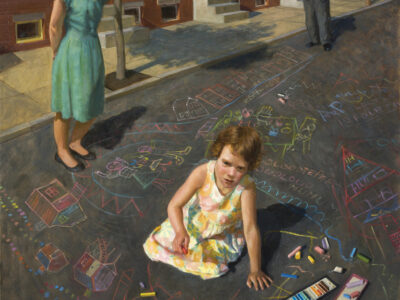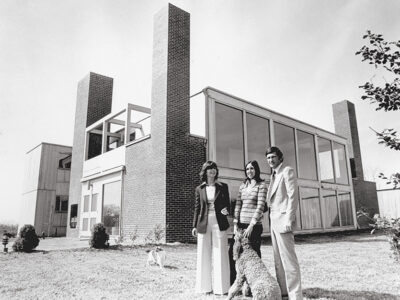
In the Supreme Court’s unanimous decision in Berman v. Parker (1954), which upheld the use of eminent domain in redevelopment efforts, Justice William O. Douglas wrote that the “concept of public welfare is broad and inclusive. The values it represents are spiritual as well as physical, aesthetic as well as monetary.”
Fifty years later, the tensions running through Douglas’s formulation are still here and they served as a jumping off point for a symposium on “Preservation and the Public Good,” co-sponsored by Penn Praxis and PlanPhilly, as part of a series of conversations examining how the notion of “the public good” informs architecture and urban design.
Historic preservation has frequently been cast as one faction in a battle that pits cultural heritage against economic development, social justice, and affordable housing.Are those oppositions really so clear-cut? Or, as Aaron Wunsch, an assistant professor in the School of Design’s graduate program in historic preservation, posited, are they merely “false choices [that] are constantly being trotted out implicitly as blockades to a more substantive discussion”?
The discussion of preserving buildings in the face of gentrification and neighborhood improvement has heated up recently in Philadelphia, and several panelists alluded in passing to two local controversies. One is a significant investment by the Philadelphia Housing Authority to transform the North Philadelphia neighborhood of Sharswood by razing several high-rise public housing towers as well as using eminent domain to demolish potentially hundreds of private homes that have fallen into disrepair [“Gazetteer,” Mar|Apr 2016]. The second is a recently green-lit project to relocate dozens of businesses and demolish several vernacular buildings on Center City’s Jewelers’ Row.
To get things started, Praxis executive director Randall Mason, who moderated the panel, asked: “What do we mean when we say ‘place matters’?”
Faye Anderson, director of All That Philly Jazz, a public history project that focuses on cultural heritage preservation, replied that, for her, the trope has been amended as #thisblackculturematters.“It’s not just bricks and mortar,” she said. “It’s about what happened inside those walls, those stories of faith and resistance and triumph. Our ancestors have done the heavy lifting—the least we can do is preserve those stories.”
Referring to herself as a “lifelong activist,” Anderson outlined how she had become an “accidental preservationist,” first considering the “intersection between preservation and social justice” after she encountered a historical marker at 1409 Lombard Street that notes, “Billie Holiday often lived here.” Missing from the sign, Anderson observed, was the fact that the building it referenced was once one of a “very few” lodging options for African-American entertainers.
Wunsch responded, “I think we’re hitting on the tension of ‘matters to me’ and ‘matters to us.’ Trying to figure out how to bridge those things is one of the sweet spots of preservation.”
An overflow crowd of some 200 people in the Philadelphia History Museum—which featured several city officials, including the head of the Philadelphia Historical Commission—was treated to an array of considered, though often tangential, musings on finding preservation’s role in civic life and negotiating its perceived conflicts with economic development.
Panelist Wendell Pritchett, the Presidential Professor of Law and Education at Penn Law, noted that his engagement with historic preservation issues dates to his boyhood in Society Hill in the late 1960s, during the height of that neighborhood’s redevelopment.Pritchett offered an optimistic view of that effort—and of how Philadelphia has fared generally in preservation matters over the years. “I think we have a fairly sophisticated way of talking about these things,” he said, “even if we disagree about individual projects and we make mistakes.”
Prema Gupta GFA’05 described how she approaches her role as senior vice president of Navy Yard planning and real estate development for the economic development agency PIDC, as well as her former work as director of planning and economic development for the University City District. Even from the perspective of real estate and economic development, she said, three place-based concerns loom large for her. One is the Jane Jacobs maxim: new ideas need old buildings; the second is recognizing that people are attracted to the quality and aesthetic of historic buildings; and the third is that preservation is really about “belonging—having historic layers ties you to a place.”
She further questioned whether anyone still falls prey to the idea of choosing between economic realities and preservation. “In economic development, I’m judged on how well I do by jobs and taxes and leases and sales. But when we talk about the Navy Yard, the first thing we talk about is the historic environment. Without the layers of history—the ships, the fantastic old buildings—the way we would sell the Navy Yard would be that much less interesting.”
The discussion morphed into an examination of whether being a preservationist necessarily means being opposed to change. “There are ways of managing change that don’t mean being uncritical about it and don’t mean being reflexively accepting of it,” said Wunsch.
But have preservationists become too narrowly focused in their concerns?
Gupta posited that preservation is “increasingly an interdisciplinary field that pulls together a lot of pro-urban, pro-history, pro-story terms. Candidly, I have been very reluctant to identify myself as a ‘preservationist,’” she continued. “Because it implies … ‘buildings first.’ And that’s not what I always think. There’s no reason why a preservationist shouldn’t think about schools and taxes and jobs, all of the things that make a city strong. These things are all very much aligned.”
Wunsch responded that while he liked the notion of “intersectional preservation” as a way of breaking down these false dichotomies, he emphasized that not identifying as an ‘-ist’ can mean that you give up the chance to be a serious advocate. “Even though it may not be a perfect fit,” he cautioned, “being prepared to at least defend the label, even as you kind of tug at its strings, is important.”
—JoAnn Greco




